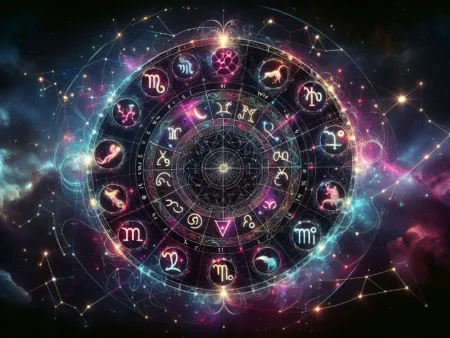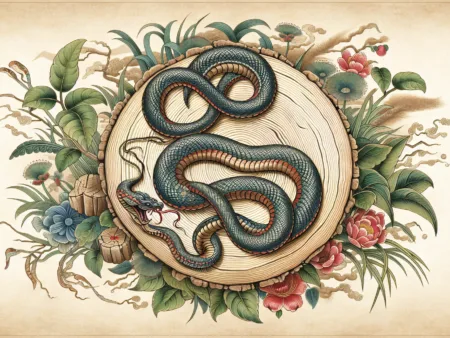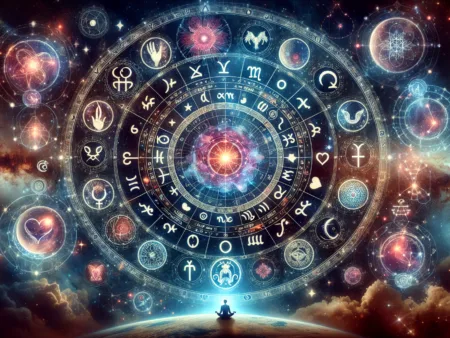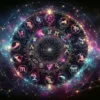Discover how tarot insights can guide you through the stages of love, from infatuation to long-term commitment, by understanding the emotions and challenges at each phase.
Understanding the Cycle of Love: How to Navigate the Stages of Relationships with Tarot Insights
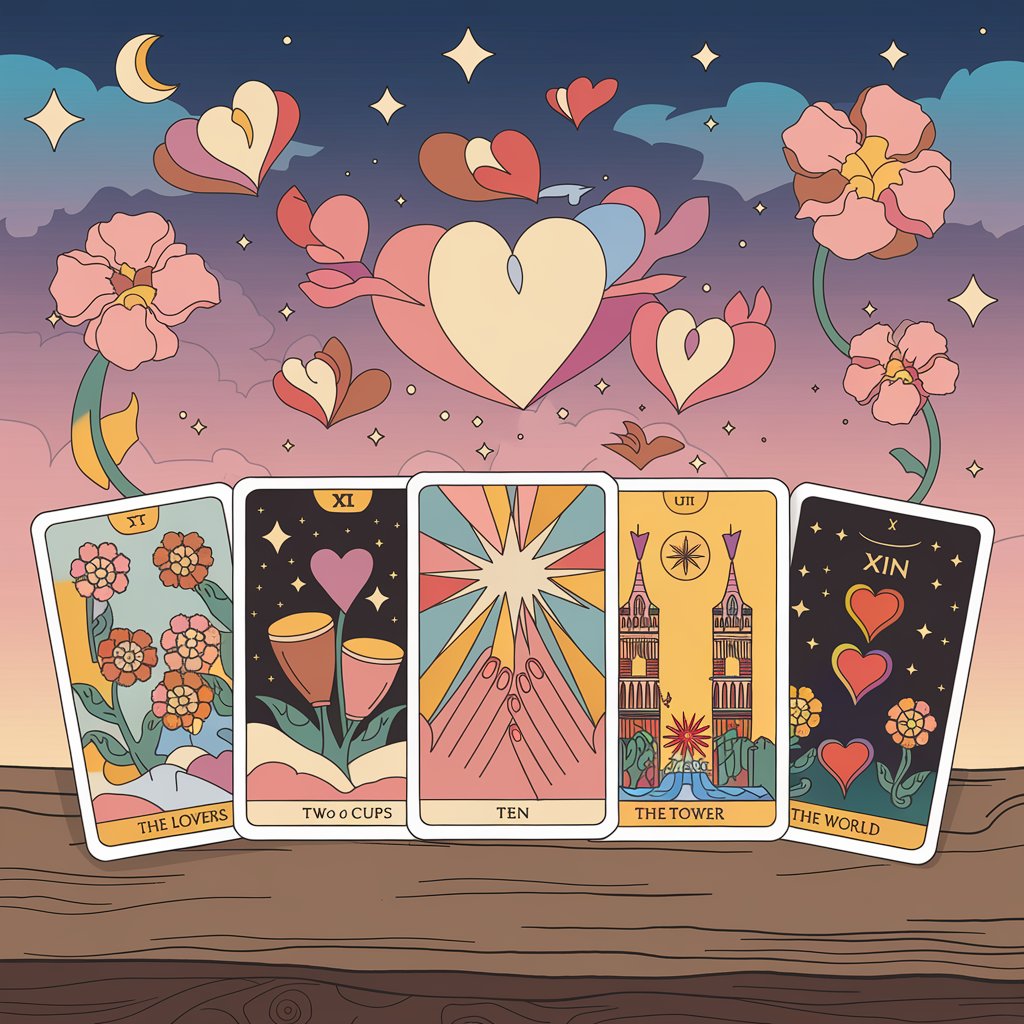
Love is a complex and transformative journey, marked by various stages that shape our emotional growth and understanding of intimacy. From the initial spark of infatuation to the challenges of long-term commitment, relationships are dynamic and ever-evolving. Tarot cards, with their symbolic and intuitive wisdom, offer unique insights into the different phases of love, helping us navigate the joys, challenges, and transitions that define romantic partnerships.
In this article, we will explore the stages of love through the lens of tarot, understanding the emotions and lessons embedded within each stage. Tarot can provide clarity and guidance, helping us approach relationships with greater awareness and emotional intelligence. Whether you are seeking new love, navigating the complexities of commitment, or reassessing your relationship, tarot insights can illuminate your path.
The Cycle of Love: Stages of a Relationship
Before we delve into tarot’s guidance, it’s important to understand the stages that most relationships typically pass through. While every relationship is unique, certain phases are universally experienced in some form. These stages include:
- Infatuation (Initial Attraction)
- Building Connection (Getting to Know Each Other)
- Deepening Emotional Intimacy (Trust and Vulnerability)
- The Power Struggle (Conflicts and Challenges)
- Commitment (Solidifying the Partnership)
- Long-Term Growth (Sustaining Love and Navigating Change)
Each stage brings its own set of emotions, challenges, and opportunities for personal growth. Tarot can act as a mirror, reflecting the energies at play and guiding individuals through these transitions.
1. Infatuation: The Spark of Attraction
The first stage of any relationship is the infatuation phase—the time of butterflies, excitement, and intense chemistry. This is where the attraction begins, often marked by physical and emotional magnetism. Tarot cards can provide insights into the authenticity of this initial connection and help clarify whether this attraction has potential for deeper growth.
Key Tarot Cards:
- The Lovers: This card represents romantic attraction, the meeting of souls, and the early stages of love. When The Lovers appears in a reading, it indicates a deep connection and mutual attraction. However, it also reminds us to ensure that our decisions are based on more than physical chemistry.
- The Fool: The Fool symbolizes new beginnings and a sense of adventure. In the context of infatuation, it suggests the excitement and spontaneity that comes with entering a new relationship. The Fool encourages you to take risks but also to remain open-minded, not rushing headlong into the unknown.
- The Knight of Cups: This card embodies the romantic and idealistic energy that often accompanies the infatuation stage. It represents emotional gestures, romance, and heartfelt expressions of love. However, it also serves as a reminder that early-stage emotions can be fleeting.
Challenges: During infatuation, it’s easy to overlook red flags or to become consumed by passion. Tarot can help you maintain clarity and prevent unrealistic expectations. The Lovers card, for example, reminds us to balance emotional and physical attraction with careful consideration of compatibility.
2. Building Connection: Getting to Know Each Other
Once the initial spark of attraction has ignited, the next stage involves building a deeper connection. This is the phase where you get to know each other’s values, habits, and quirks. The excitement of new love often begins to give way to more meaningful conversations, and a sense of emotional intimacy starts to form.
Key Tarot Cards:
- The Two of Cups: This card signifies mutual attraction and harmony between two people. It reflects the process of two individuals coming together, establishing emotional and intellectual bonds. In a relationship reading, the Two of Cups suggests balance, cooperation, and the joy of connection.
- The Hierophant: This card represents tradition, structure, and shared values. When The Hierophant appears, it asks whether you and your partner are aligned in your beliefs and goals for the future. It encourages discussions about compatibility and long-term potential.
- The Page of Pentacles: This card symbolizes curiosity and a willingness to invest in building a foundation. It suggests that both partners are open to learning about each other and laying the groundwork for a lasting relationship.
Challenges: This stage may reveal differences in expectations, communication styles, or goals. Tarot can provide insight into areas that need attention, highlighting the importance of clear communication and emotional honesty.
3. Deepening Emotional Intimacy: Trust and Vulnerability
As the relationship deepens, you enter the stage of emotional intimacy. This phase is defined by trust, vulnerability, and the willingness to share your true selves with one another. Emotional intimacy is essential for any long-term relationship, but it also comes with its challenges, as it requires both partners to let down their defenses.
Key Tarot Cards:
- The Star: This card represents hope, healing, and openness. The Star suggests that both partners are ready to embrace vulnerability and build a relationship based on trust and authenticity. It indicates that emotional wounds from the past can be healed through this connection.
- The Moon: The Moon symbolizes emotions that are hidden or unclear. In the context of emotional intimacy, it suggests that fears, insecurities, or doubts may surface. It encourages both partners to face these feelings and to have honest conversations about their fears or past experiences.
- The Ace of Cups: This card signifies new emotional beginnings and deep affection. It represents the overflowing of love and the potential for profound emotional connection. The Ace of Cups invites both partners to fully open their hearts and nurture their emotional bond.
Challenges: Emotional intimacy can be daunting, especially for those who have been hurt in the past. Tarot can help identify emotional blockages, fears, or unresolved trauma, allowing both partners to work through their insecurities together.
4. The Power Struggle: Conflicts and Challenges
After emotional intimacy is established, many couples experience the power struggle phase. This is when differences in personality, values, or expectations may lead to conflict. The honeymoon phase fades, and partners begin to see each other’s flaws and vulnerabilities. The key to navigating this stage is learning to compromise and work through conflicts in a healthy, constructive way.
Key Tarot Cards:
- The Tower: This card represents sudden change, upheaval, or a breakdown of old structures. When The Tower appears in a relationship reading, it indicates that the power struggle may feel overwhelming, but it also suggests that transformation is possible. This card reminds us that conflicts can lead to growth if approached with the right mindset.
- The Five of Wands: This card symbolizes tension, competition, and conflict. It represents the inevitable challenges that arise when two individuals try to assert their needs or opinions. The Five of Wands encourages both partners to address conflicts directly, without avoiding or escalating tensions.
- The Emperor: The Emperor symbolizes authority, structure, and control. In the context of a power struggle, it suggests that both partners may need to assert boundaries while also learning to compromise. The Emperor encourages healthy leadership and responsibility within the relationship.
Challenges: The power struggle phase can be one of the most difficult stages in a relationship. Tarot can offer guidance on how to resolve conflicts, suggesting where compromises are needed and how to balance individual needs with the relationship’s overall health.
5. Commitment: Solidifying the Partnership
Once couples have navigated through the power struggles, they often reach the commitment stage, where they decide to invest fully in the relationship. This is the phase where long-term plans are made, such as moving in together, marriage, or building a future as a team. Commitment requires trust, communication, and a willingness to work through future challenges as a united front.
Key Tarot Cards:
- The Ten of Pentacles: This card represents long-term security, family, and stability. In a relationship reading, it suggests that the relationship has the potential for a stable, committed future. The Ten of Pentacles reflects shared goals and a strong foundation built over time.
- The Four of Wands: This card symbolizes celebration, union, and joy. It is often associated with marriage, commitment ceremonies, or achieving important milestones together. The Four of Wands indicates that both partners are ready to commit fully to the relationship.
- The Justice Card: Justice represents fairness, balance, and legal matters. In the context of commitment, it suggests that the relationship is built on mutual respect and equality. Justice encourages partners to maintain fairness in their decisions and to ensure that both parties are treated with honesty and respect.
Challenges: The commitment stage can bring its own set of challenges, particularly regarding expectations, finances, or life changes. Tarot can offer insights into potential roadblocks, helping couples to plan for the future with clarity and purpose.
6. Long-Term Growth: Sustaining Love and Navigating Change
The final stage of the relationship cycle is long-term growth, where couples have built a solid foundation and are working together to maintain and nurture their love. This phase involves navigating life’s ups and downs—career changes, family dynamics, and personal growth—while continuing to support each other.
Key Tarot Cards:
- The World: This card represents completion, fulfillment, and achievement. In a relationship reading, it suggests that the couple has reached a place of harmony and understanding. The World indicates that both partners have grown together and are ready to face future challenges as a team.
- The Empress: The Empress symbolizes nurturing, abundance, and growth. It encourages couples to continue investing in their relationship, whether through acts of love, emotional support, or shared goals. The Empress reminds us that relationships require ongoing care and attention.
- The Wheel of Fortune: This card represents cycles, change, and destiny. In the context of long-term growth, it suggests
In conclusion, understanding the cycle of love through tarot insights offers a powerful tool for navigating the complexities of relationships. Each stage—from the initial spark of infatuation to the deep commitment of long-term partnership—presents unique challenges and opportunities for growth. Tarot cards provide guidance by illuminating hidden emotions, fostering communication, and offering clarity during moments of uncertainty. By embracing the wisdom of the cards, you can approach your relationships with greater awareness, ensuring a more harmonious and fulfilling journey of love.

